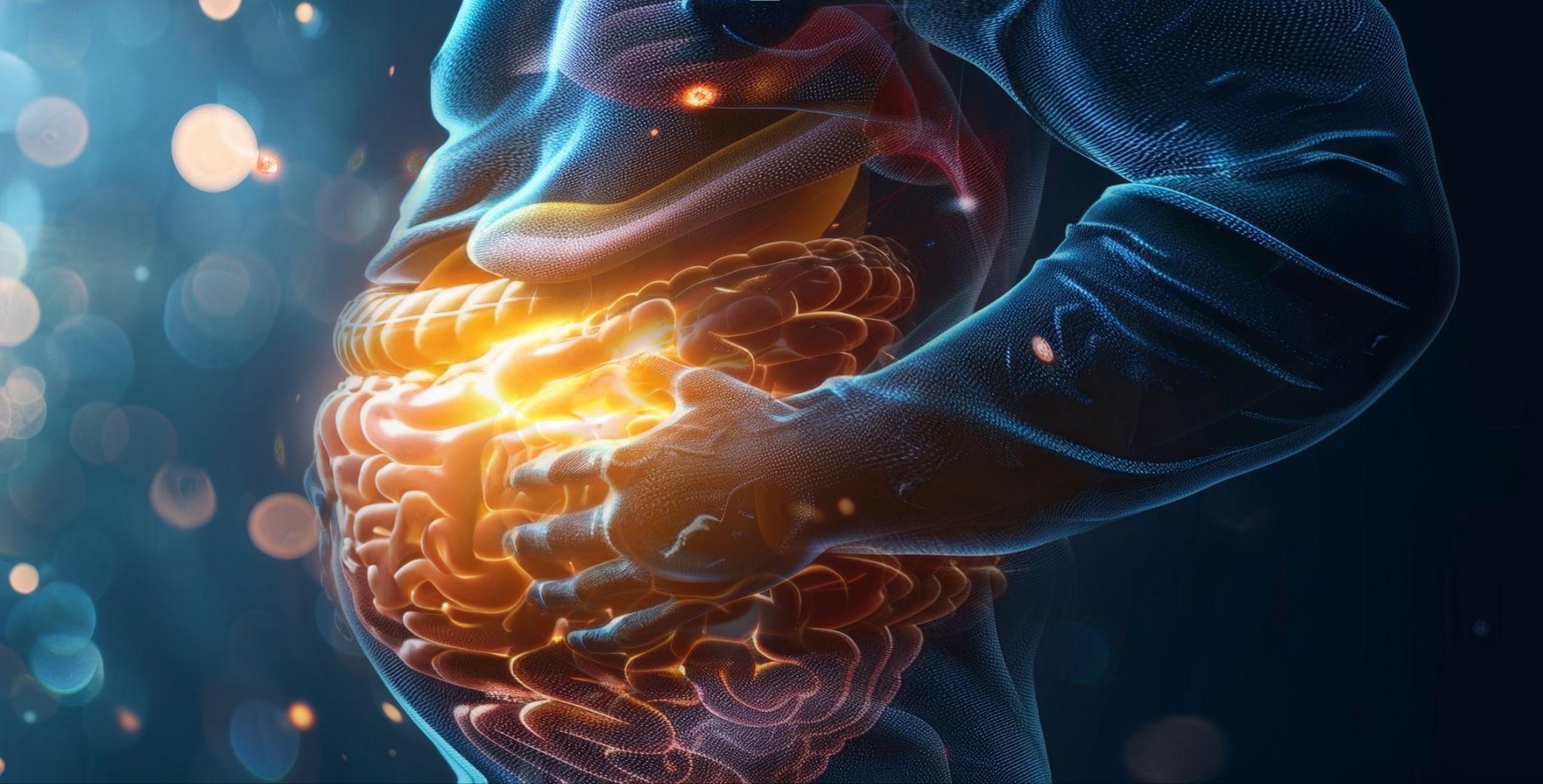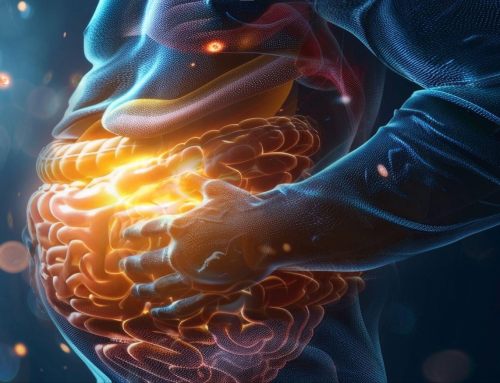Nitric Oxide Levels & Their Role in Menopause Symptoms
What if many of the symptoms associated with menopause could be reduced, simply by optimizing underlying biochemical processes in the body that play a role?
Menopause is marked by decreased levels of endogenous estrogen, impacting production of nitric oxide, an important gaseous signaling molecule for health and vitality (1). With a fleeting life of less than a few seconds, nitric oxide (NO) is integral for modulating countless aspects of our health.
A growing body of research demonstrates the role of Nitric Oxide with particular relevance in menopause and cardiovascular health. In fact, Cardiovascular Disease (CVD) was found to be the leading cause of death in postmenopausal women, exceeding deaths associated with cancer (2).
The increased prevalence of CVD in women is thought to be largely due to the decline in estrogen, a key hallmark of menopause, associated with a reduction in production of this naturally occurring gas. While nitric oxide is important for a host of reasons, it has significant functions related to vascular and hormonal health. It is also important for mood and aging, which are often overlooked symptoms of menopause.
A Quickly Fleeting Gas, Many Homeostatic Functions
Nitric Oxide maintains an array of integral physiological and biological modulating functions in the body. Improving and optimizing levels of nitric oxide can help restore functioning to the body’s systems, notably related to the symptoms observed in menopause, such as inflammation, oxidative stress, aging, and mood, in addition to vascular health.
Remaining informed on how to best optimize and restore physiological processes in the body that support natural NO production can help alleviate a number of symptoms associated with the onset of menopause. Nitric oxide production is significant as it promotes efficient blood flow along with nutrient and oxygen delivery to cells, tissues, and organs–comprising the major systems of the body. This gaseous signaling molecule degrades quickly, so it must be constantly replenished.
Nitric Oxide (NO) Mechanisms of Action
Produced in the blood cells, Nitric Oxide improves oxygen and nutrient delivery to every cell in the body, thereby affecting its systems and overall functioning. NO is produced and eliminated rapidly. While Nitric Oxide (NO) is a free radical, it can counteract or neutralize other free radicals, serving important antioxidant functions (3). It also has strong properties in governing healthy levels of inflammation. This is important as inflammation underlies nearly all chronic diseases and is involved in mood, aging, and cardiovascular health (4).
The Role of Estrogen in NO Production
Hormones are related to the functioning of nearly all our cells’ metabolism, impacting energy and mood (5). Sufficient estrogen is a protective factor for women in menopause, given its role as a vasodilator. It is important, therefore, to be aware of declining estrogen, as this essential hormone induces nitric oxide production. Oxidative stress, inflammation, and cardiovascular disease have all been associated with menopause, as well as a decline in healthy NO levels.
Reductions in estrogen observed in menopause are a primary reason for lowered levels of nitric oxide, as estrogen is a trigger for NO production (1). Nitric Oxide synthesis also has important roles in oxygen delivery to the cells, promoting cellular renewal and vitality, having implications in the aging process (6).
Altered Levels of Enzymes
Research suggests that alterations in estrogen levels also cause disruptions in producing antioxidant enzymes, such as glutathione – which can result in increased oxidative stress, aging, and a host of other issues (7). Estrogen regulates antioxidant enzymes important for generation of oxygen, including NADH/NADPH oxidases, also playing a role in endothelial function (8).
Reduced or impaired expression of endothelial nitric oxide synthase enzymes have also been suggested to contribute to lower levels of nitric oxide production (9). Genetic variants and reductions in molecules necessary for NOS production can cause uncoupling of the eNOS enzyme, affecting expression. When NOS is uncoupled, superoxide is generated rather than nitric oxide, inducing oxidative stress in the body.
How Estrogen Influences NO Bioavailability
Estrogen attenuates nitric oxide production and utilization via a number of mechanisms. In addition to stimulating eNOS synthase, estrogen activates eNOS gene expression and non-genomic activation of the PI3K/phosphokinase B (PKB/AKT) mediated signaling pathway, as well as an increase in intracellular free calcium (10). Aging and menopause on the other hand, downregulate eNOS expression, causing an increase in Reactive Oxygen Species (ROS) and a reduction in nitric oxide (NO) bioavailability, contributing to the endothelial dysfunction underlying vascular stiffness and aging, and associated issues with cardiovascular health (11).
Role in Vascular Health
Sufficient nitric oxide levels have protective roles relative to cardiovascular health. Estrogen modulates vascular health, promoting relaxation and blood flow, augmenting a number of regulatory mechanisms, such as regulating blood pressure (1). NO also impacts oxidative stress, healthy arterial walls, and inflammation in the body (12).
Endothelial Function
In addition to its roles in vascular health, NO also has important roles in improving endothelial function. This is important as endothelial function is associated with inflammation, metabolism, oxidative stress, and GI permeability, among other factors. Aging has been shown to induce structural and functional changes in vascular health, including endothelial dysfunction and repair, in addition to arterial wall narrowing and stiffening.
Cellular Renewal: Skin Health & Aging
Given these properties, it makes sense that NO supports cellular renewal and mitochondrial function, having a role in healthy aging (13). Nitric oxide also supports lymphatic activity, further having implications for skin health, immunity, and oxidative stress. NO improves blood flow saturation and circulation, promoting healthy cell turnover (14). Nitric oxide production has also been shown to have a profound influence on lymph flow, transport, and production (15). Regarding its antioxidant properties, NO supports aging by quenching free radicals that can otherwise cause oxidative damage to cells. Furthermore, NO also has been suggested to improve telomere length, having further implications for healthy aging (16). These properties play a role in menopause symptoms such as thinning hair and dry skin.
Mood & Sex
Nitric oxide has a role in improving blood flow, supporting nervous functioning and mood, as well as sexual arousal and behavior. This also speaks to NO’s role as a neuromodulator, regulating important neurotransmitters for mood health, including serotonin, dopamine and norepinephrine. Nitric oxide also has functions in neuroplasticity, creating new connections between brain cells, in addition to modulating mood. On the other hand, when NO production is not adequate, this can compromise mood health (17).
In terms of sexuality, given these mind-body modulating properties of NO—specifically the communication amongst the brain and spinal cord— it makes sense that arousal is enhanced and the motivation to have sex (18).
Antioxidant & Anti-inflammatory Functions
While it is a free radical, NO has strong antioxidant and anti-inflammatory properties. Nitric oxide can counteract or neutralize other free radicals. It also exerts anti-inflammatory effects by inhibiting cytokine synthesis (19). Research shows an increased role of NO in modulating inflammatory and appropriate immune responses, as well as having functions related to systemic inflammation (20).
Bioavailability & Utilization of NO
Estrogen is known to increase nitric oxide bioavailability by a number of mechanisms. While the substrates and precursors are important for NO production, the body must be able to utilize NO, which relies on various factors.
Sufficient Precursors & Microbiota
Endogenous NO is made via Nitric Oxide Synthase (NOS) pathways that rely on precursors including L-arginine and nitrates. The functioning of the NOS enzyme and pathway also rely on these precursors such as arginine and nitrates from the diet (22).
Biological precursors and conditions related to the microbiome are important in NO synthesis. Arginine supports NO production via the L-arginine nitric oxide pathway. Nitrates upregulate the GTP Cyclohydrolase enzyme—increasing generation of Tetrahydrobiopterin (BH4), the rate limiting enzyme for NOS-mediated production (23). BH4 is also integral for the synthesis of neurotransmitters significant for mood health such as serotonin and dopamine, amongst others. Additionally, sufficient stomach acid and healthy, diverse microbiota in the oral and GI microbiome, are all further required for efficient NO synthesis (24).
Optimizing NO Production with Nutrition & Lifestyle
Lifestyle factors such as nutrition, quality sleep, and exercise all support optimization of NO production, as well as the regulation of hormones.
Including a diverse array of as many colored vegetables as possible is important not only for nitrates, but also for antioxidant properties which can support NO production, as well as the quenching of free radicals. Antioxidants help to quench and destroy free radicals that may otherwise go after nitric oxide. Including healthy fats in the diet can also improve hormone regulation, while supporting the body in modulating inflammation and supporting the microbiome. These may include olive oil, avocados, nuts, or seeds. Finally, consuming foods low on the glycemic index are also important in optimizing NO production.
Modulating stress, obtaining quality sleep, regular exercise, sun exposure, and intentional, deep breathing from the nostrils are all further ways of enhancing natural NO production in the body (25). In fact, in a cross-sectional 2017 study, aerobic exercise was found to increase NO production, reduce blood pressure and induce antioxidant enzymes (26). This study revealed the importance of lifestyle factors such as exercise in supporting our physiology.
Conclusion
Nitric Oxide is a biological mediator with exciting implications. Optimizing NO bioavailability and production helps to restore homeostatic balance in the body, thereby supporting health and well-being, with particular relevance to the changes and symptoms associated with menopause that can compromise one’s health and vitality.
If you want to learn more, you won’t want to miss this free virtual event featuring leading experts in the field, Dr. Jill Carnahan, Dr. Chris Easton, and Dr. Jeff Bland. On October 24th from 5-7 pm, we will learn about concurrent conditions of the aging woman that may be better understood within the context of a steady drop in naturally-produced Nitric Oxide and the implications of enhancing natural Nitric Oxide production in the body.
References:
- Novella S., Dantas A., Segarra G., Medina P & Hermenegildo C. (2012). Vascular aging in women: is estrogen the fountain of youth? Physiol, 3, https://doi.org/10.3389/fphys.2012.00165
- Eaker E. D., Chesebro J. H., Sacks F. M., Wenger N. K., Whisnant J. P., Winston M. (1993). Cardiovascular disease in women. Circulation 88, 1999–2009
- Guzik TJ, Korbut R, Adamek-Guzik T. Nitric oxide and superoxide in inflammation and immune regulation. J Physiol Pharmacol. 2003 Dec;54(4):469-87. PMID: 14726604
- E. Wright, P.C. Strike, L. Brydon, A. Steptoe. (2005). Acute inflammation and negative mood: Mediation by cytokine activation. Brain, Behavior, and Immunity, 19, 4, 345-350, ISSN 0889-1591,https://doi.org/10.1016/j.bbi.2004.10.003.
- Hiller-Sturmhöfel S, Bartke A. The endocrine system: an overview. Alcohol Health Res World. 1998;22(3):153-64. PMID: 15706790; PMCID: PMC6761896.
- Thomas D. (2015). Breathing new life into nitric oxide signaling: A brief overview of the interplay between oxygen and nitric oxide, Redox Biology, 5,225-233, https://doi.org/10.1016/j.redox.2015.05.002.
- Sivritas D., Becher M. U., Ebrahimian T., Arfa O., Rapp S., Bohner A., Mueller C. F., Umemura T., Wassmann S., Nickenig G., Wassmann K. (2011). Antiproliferative effect of estrogen in vascular smooth muscle cells is mediated by Kruppel-like factor-4 and manganese superoxide dismutase. Basic Res. Cardiol. 106, 563–575 10.1007/s00395-011-0174-z
- Wagner A. H., Schroeter M. R., Hecker M. (2001). 17beta-estradiol inhibition of NADPH oxidase expression in human endothelial cells. FASEB J. 15, 2121–2130 10.1096/fj.01-0123com
- Yoon H. J., Cho S. W., Ahn B. W., Yang S. Y. (2010). Alterations in the activity and expression of endothelial NO synthase in aged human endothelial cells. Ageing Dev. 131, 119–123 10.1016/j.mad.2009.12.010
- Sumi D, Ignarro LJ. Estrogen-related receptor alpha 1 up-regulates endothelial nitric oxide synthase expression. Proc Natl Acad Sci U S A. 2003 Nov 25;100(24):14451-6. doi: 10.1073/pnas.2235590100. Epub 2003 Nov 10. PMID: 14610283; PMCID: PMC283612.
- El Assar M, Angulo J & Rodríguez-Mañas L.(2013). Oxidative stress and vascular inflammation in aging. Free Radical Biology and Medicine,65, 380-401
- Ally A, Powell I, Ally MM, Chaitoff K, Nauli SM. Role of neuronal nitric oxide synthase on cardiovascular functions in physiological and pathophysiological states. Nitric Oxide. 2020 Sep 1;102:52-73. doi: 10.1016/j.niox.2020.06.004. Epub 2020 Jun 23. PMID: 32590118; PMCID: PMC7375925.
- Pourbagher-Shahri AM, Farkhondeh T, Talebi M, Kopustinskiene DM, Samarghandian S, Bernatoniene J. An Overview of NO Signaling Pathways in Aging. 2021 Jul 27;26(15):4533. doi: 10.3390/molecules26154533. PMID: 34361685; PMCID: PMC8348219.
- Weller, R. (1997), Nitric oxide — a newly discovered chemical transmitter in human skin. 137: 665-672. https://doi.org/10.1046/j.1365-2133.1997.19332063.x
- Ohhashi T, Kawai Y, Maejima D, Hayashi M, Watanabe-Asaka T. Physiological Roles of Lymph Flow-Mediated Nitric Oxide in Lymphatic System. Lymphat Res Biol. 2023 Jun;21(3):253-261. doi: 10.1089/lrb.2022.0072. Epub 2022 Dec 26. PMID: 36577034.
- Caio V. Sousa et al. (2019). Telomere length and redox balance in master endurance runners: The role of nitric oxide,Experimental Gerontology,117, 113-118,https://doi.org/10.1016/j.exger.2018.11.018.
- Yun HY, Dawson VL, Dawson TM. Neurobiology of nitric oxide. Crit Rev Neurobiol. 1996;10(3-4):291-316. doi: 10.1615/critrevneurobiol.v10.i3-4.20. PMID: 8978984.
- Melis MR, Argiolas A. Erectile Function and Sexual Behavior: A Review of the Role of Nitric Oxide in the Central Nervous System. Biomolecules. 2021 Dec 11;11(12):1866. doi: 10.3390/biom11121866. PMID: 34944510; PMCID: PMC8699072.
- Guzik TJ, Korbut R, Adamek-Guzik T. Nitric oxide and superoxide in inflammation and immune regulation. J Physiol Pharmacol. 2003 Dec;54(4):469-87. PMID: 14726604 (3*)
- Sharma JN, Al-Omran A, Parvathy SS. Role of nitric oxide in inflammatory diseases. Inflammopharmacology. 2007 Dec;15(6):252-9. doi: 10.1007/s10787-007-0013-x. PMID: 18236016.
- Bryan, N.S., Tribble, G. & Angelov, N. Oral Microbiome and Nitric Oxide: the Missing Link in the Management of Blood Pressure. Curr Hypertens Rep 19, 33 (2017). https://doi.org/10.1007/s11906-017-0725-2
- Kevin S. Edgar, Orla M. Galvin, Anthony Collins, Zvonimir S. Katusic, Denise M. McDonald; BH4-Mediated Enhancement of Endothelial Nitric Oxide Synthase Activity Reduces Hyperoxia-Induced Endothelial Damage and Preserves Vascular Integrity in the Neonate. Ophthalmol. Vis. Sci.2017;58(1):230-241. https://doi.org/10.1167/iovs.16-20523.
- Koch CD, Gladwin MT, Freeman BA, Lundberg JO, Weitzberg E, Morris A. Enterosalivary nitrate metabolism and the microbiome: Intersection of microbial metabolism, nitric oxide and diet in cardiac and pulmonary vascular health. Free Radic Biol Med. 2017 Apr;105:48-67. doi: 10.1016/j.freeradbiomed.2016.12.015. Epub 2016 Dec 16. PMID: 27989792; PMCID: PMC5401802.
- Santhanam, L., Christianson, D. W., Nyhan, D., and Berkowitz, D. E. (2008). Arginase and vascular aging. Appl. Physiol. 105, 1632–1642.Pubmed Abstract | Pubmed Full Text | CrossRef Full Text
- Lundberg JO, Settergren G, Gelinder S, Lundberg JM, Alving K, Weitzberg E. Inhalation of nasally derived nitric oxide modulates pulmonary function in humans. Acta Physiol Scand. 1996 Dec;158(4):343-7. doi: 10.1046/j.1365-201X.1996.557321000.x. PMID: 8971255.
- Tsukiyama Y et al. (2017). Effects of exercise training on nitric oxide, blood pressure and antioxidant enzymes. J Clin Biochem Nutr. 60(3): 180–186. Published online 2017 Apr 7. doi: 3164/jcbn.16-108












